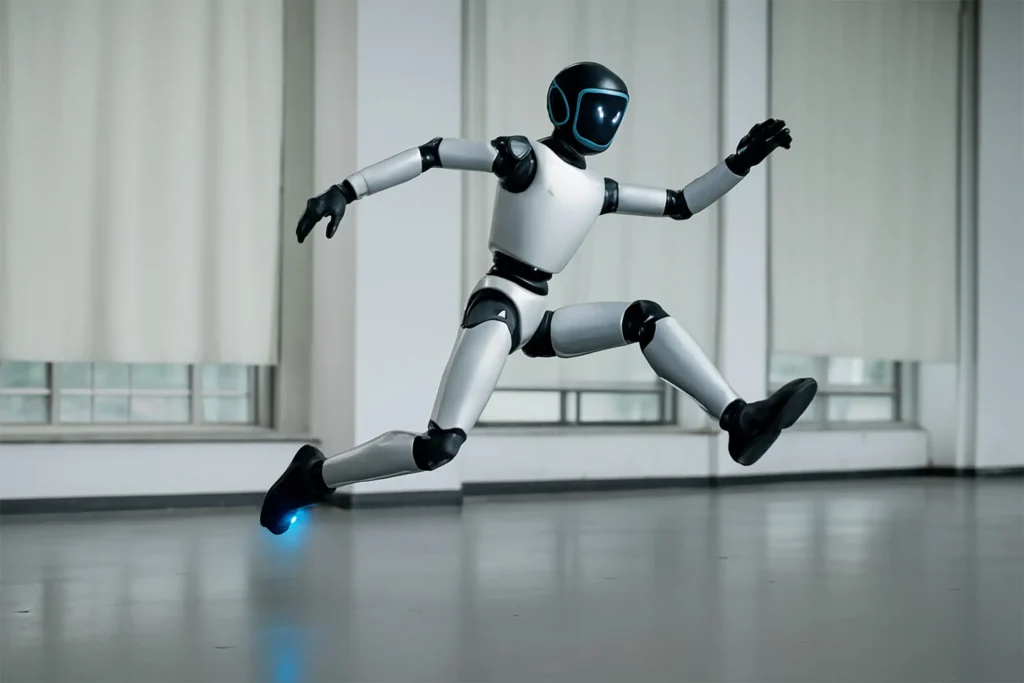When Unitree Robotics first unveiled its Anti-Gravity Robot, the reaction was instant: this is not just another piece of futuristic tech, it’s a potential shift in the way we think about machines. For years, robots have been defined by their terrain—some walk, some roll, and some fly. But Unitree’s latest creation seems to break that boundary altogether.
What Makes the Unitree Anti-Gravity Robot Different?
Most robots today are limited by one simple fact: gravity. Drones can take to the air but struggle with endurance, while ground-based robots are trapped by terrain. The Unitree Anti-Gravity Robot blends both worlds, using an advanced propulsion system that allows it to hover, glide, and then settle back down to move across solid ground.
This dual capability makes it feel less like a gimmick and more like a genuine rethinking of robotic design. Instead of asking “what can it do on land?” or “what can it do in the air?”, the better question is “what can’t it do?”
Core Features Worth Highlighting
1. Anti-Gravity Propulsion:
The defining feature is, of course, its lift system. Rather than relying on noisy propellers like traditional drones, it uses a more stable magnetic and thrust-based design. This means it can float smoothly and hold position with impressive accuracy.
2. Smarter Navigation:
With onboard LIDAR sensors, cameras, and AI algorithms, the robot doesn’t just move blindly. It creates a live map of its surroundings and makes quick adjustments. Watching it weave through obstacles feels almost instinctive.
3. Ground-to-Air Transition:
Unlike a drone, which has to stay airborne, this robot can land, conserve energy, and continue rolling or walking. This hybrid design extends its battery life and versatility far beyond what either ground or aerial robots can achieve alone.
4. Durability in Harsh Environments:
Built with lightweight composites, the robot is weather-resistant, dustproof, and shock-protected. It’s designed not just for labs but for the real world — factories, disaster zones, or even outdoor exploration.
Performance in Real Scenarios
During demonstrations, the robot has shown remarkable adaptability. In a warehouse, it hovered above obstacles that would block a wheeled robot, then dropped down to continue on flat ground. In outdoor tests, it managed windy conditions without losing stability.
Rescue teams see potential in its ability to deliver medical supplies into unstable areas. The military has already explored its stealth applications, where hovering quietly offers an advantage over drones. Even researchers suggest possible space applications, where low-gravity environments would suit their propulsion perfectly.
Who Can Use This Technology?
Right now, the Anti-Gravity Robot is mainly aimed at industrial, research, and defence clients. Some key sectors include:
- Industrial operations: pipeline checks, high-risk inspections, and logistics.
- Healthcare and rescue: reaching disaster victims quickly and safely.
- Security and defence: surveillance and tactical support.
- Exploration: from underground tunnels to planetary missions.
For everyday consumers, this technology is still out of reach. But just as drones went from military tools to hobby gadgets in a decade, it’s not hard to imagine mini anti-gravity robots at home within the next few years.
How It Compares with Other Robots
Boston Dynamics’ Spot, for example, is an incredible quadruped robot — but it cannot hover. Consumer drones are flexible in the air — but clumsy in confined indoor spaces. The Unitree Anti-Gravity Robot bridges this gap, making it more versatile than either.
This hybrid approach is the biggest reason experts are calling it a true game-changer.
Pricing and Availability
At present, this isn’t a product you can simply order online. The robot is being distributed to select partners at a cost starting in the upper tens of thousands, depending on configuration. For now, it’s more of a specialist tool than a consumer gadget, but Unitree has already suggested smaller, more affordable versions could follow.
Strengths vs. Limitations
Strengths
- Unique anti-gravity system
- Hybrid land-and-air design
- AI-driven navigation
- Durable and weather-resistant
- Wide industry potential
Limitations
- Very high price
- Limited release
- Requires expert servicing
Looking Ahead: The Future of Robotics
This robot is not just about solving today’s problems—it’s about pointing to what comes next. We are moving toward an age where machines will not be defined by a single environment. With more efficient batteries and AI improvements, future models will likely be smaller, cheaper, and more capable.
The idea of robots that can glide through cities, explore Mars, or carry out rescue missions is no longer science fiction. Unitree has shown us that the pieces are already falling into place.
Final Thoughts:-
The Unitree Anti-Gravity Robot represents a major leap forward. It’s expensive and exclusive for now, but it demonstrates that robotics doesn’t have to be limited by gravity or terrain anymore. For industries, governments, and researchers, this is a preview of what’s possible. For the rest of us, it’s a glimpse into the future — a future where robots don’t just walk or fly, but do both with ease.

